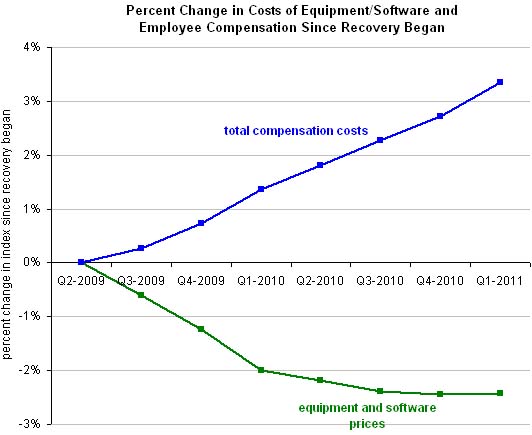As noted previously, cheap capital and expensive labor tend to lead to the substitution of capital for labor – after all capital is often called “labor saving devices” for a reason. Now, we have solid evidence that the total cost (wages or salary and benefits) of labor has risen markedly while equipment and software costs have fallen since 2009.
For the rest of the story, see Catharine Rampall’s NY Times Economix blog last Friday entitled “Man vs. Machine.” To put it most starkly, if your job can be replaced by an algorithm, it probably will be. As those who took Econ 320 should know, if you attempt to implement macroeconomic stabilization policy without understanding the microeconomics of labor markets, you may not be blessed with success.
